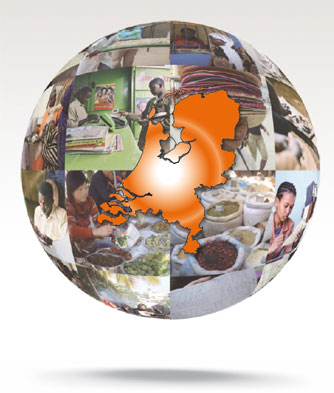Reinventing microfinance
Recently, ING’s Economics Department published the report A Billion to gain?
This comprehensive report, a joint initiative of ING, the Netherlands Platform for Microfinance (NPM) and the University of Groningen, evaluates the Dutch Microfinance Offer while highlighting trends and initiatives that will be decisive in improving social performance.
Microfinance, what is it again?
Initially, microfinance was built on the idea that loans could help the poor improve their standard of living, and was specifically targeted at micro entrepreneurs. However, microfinance has since broadened its scope, with loans being targeted at different types of customers for various purposes, including student loans, mortgages, and energy lending, to name a few. In the near future, microfinance will extend its product range beyond loans to include products such as insurance, savings, mobile banking and payments and cash management.
How big is the market?
The global microfinance sector is estimated to be worth around USD 80 billion, with cross-border funding accounting for approximately USD 25 billion. The members of NPM, of which ING is one, provide about USD 2.1 billion worth of funding, or 8.4% of the total foreign funding. Of course, microfinance does not only revolve around money, transferring knowledge is equally important.
Is microfinance successful?
Research shows that the number of low income countries has fallen from 60 to 40 in the last decade. Nowadays, only 20% of poor people live in low income countries compared to 93% in 1990. However, moving from one income level to the next does not necessarily mean greater financial inclusion. Currently, about 2.7 billion people are excluded from formal financial services.
Microfinance is estimated to reach only about 190 million people, a mere 7% of this group. The microfinance sector is aiming to create access to the formal financial infrastructure which will positively impact the social and economic development of the poor.
According to the report, another USD 250 to USD 300 billion is needed globally if microfinance is to provide access to formal financial services for every poor household. On the bright side, despite the crisis, the market for foreign capital to microfinance has maintained profitable growth, while corporate responsibility is becoming more and more important for investors.

What are the main conclusions of the report?
First of all, the ING/NPM report is the first comprehensive overview of the Dutch Microfinance Offer, and reflects the active role of the NPM members in promoting initiatives to help improve the sector at large. From the report we can conclude that Dutch funders play an important role in microfinance, while managing to balance social return with financial return. The Dutch are active in 68% of the 40 low income countries in the world, to which they allocate 24% of their funds, which is considerably higher than the rest of the world (16%).
The report also provides a clear categorisation of the players in the microfinance sector by making a distinction between Donors, Investors and Microfinance Investment Funds. It appears that these peer groups differ significantly from each other in terms of aspects such as scale, scope and financial return.
And now what?
The purpose of the report is to address the opportunities and challenges we currently face. According to Nick Jue, CEO of ING Netherlands, the findings will be used “to refine the social and commercial strategy with regard to microfinance”. Moreover, as the report has given novel insights into the world of microfinance, it has been positively received by NPM and local media.
Watch the video for more information or read the report (English only).
